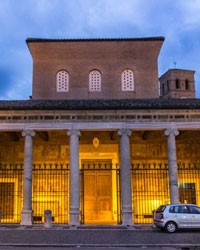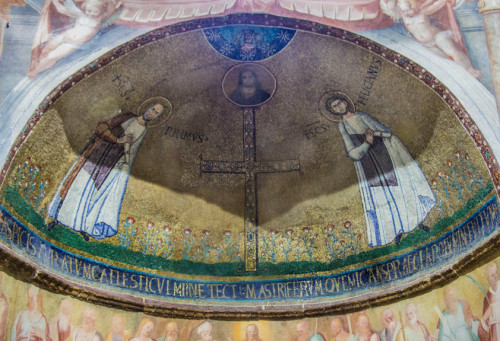
Mosaics in the Chapel of Prym and Felicjan, Church of San Stefano Rotondo - foundation of Pope Theodore I
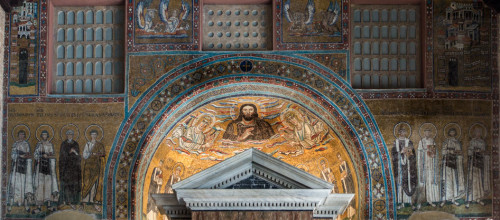
Mosaic in the apse of the San Venanzio Chapel with the image of Pope Theodore I, San Giovanni Baptistery in Lateran
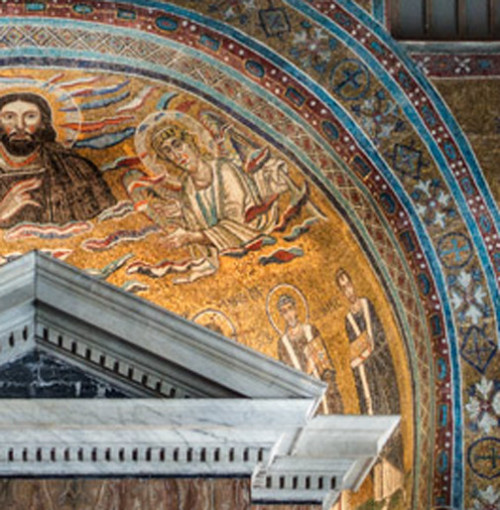
Mosaic in the apse of the San Venanzio Chapel with the image of Pope Theodore I (last on the right), San Giovanni Baptistery in Lateran
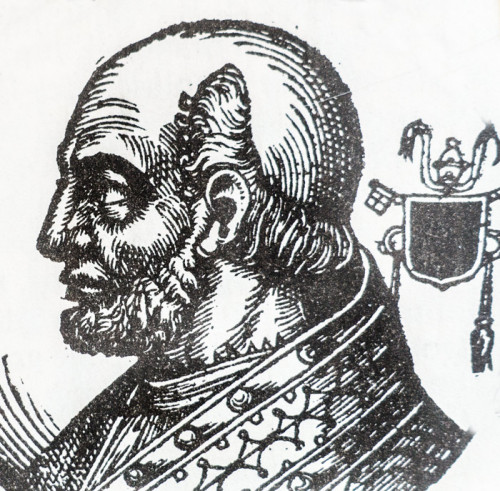
Alleged portrait of Pope Theodore I after Platina
He was part of a group of theologically educated priests, who in the following centuries, would sit upon St. Peter’s throne. He also started a line of popes of Greek descent. He came to Rome with a group of refugees, who after the Muslim invasion of Palestine and Syria were searching for sanctuary in the West. His father, also Theodore was the bishop of Jerusalem, while he himself was elected as the bishop of Rome in 642.
He was part of a group of theologically educated priests, who in the following centuries, would sit upon St. Peter’s throne. He also started a line of popes of Greek descent. He came to Rome with a group of refugees, who after the Muslim invasion of Palestine and Syria were searching for sanctuary in the West. His father, also Theodore was the bishop of Jerusalem, while he himself was elected as the bishop of Rome in 642.
Theodore was the first to introduce, a habit which had until then been rejected in Rome, but which had been practiced for a long time by the Eastern Church, of the translation of the bodies of Christian martyrs from the catacombs into the churches. And that is what made him famous. This act allowed him to direct a stream of pilgrims coming to Rome, who had until that time been coming to the catacombs found on the outskirts of the city, to the city center. In this way, the places where the bodies (relics) of saints were deposited acquired the status of sanctified and were willingly visited by pilgrims. The first, such translation concerned the remains of SS Primus and Felician, which were transported from the catacombs at via Nomentana to the Church of San Stefano Rotondo on Pincio Hill. A chapel, devoted to them was furnished in the church, in which the father of Theodore was also laid to rest. In the mosaics which adorn its apse, the home city of the pope, Jerusalem was also commemorated. They show the aforementioned saints with flowers under their feet, standing on both sides of a monumental cross, the so-called crux gemmata, which is a commemoration of the one, which had stood on the Golgotha before, decorated with engraved gems and precious stones, funded either by Emperor Constantine or Theodosius II (here historians do not agree). The Jerusalem-based Golgotha recalled in such a way was part of the Christian tradition, according to which the mountain, the location of Christ's Passion was, in fact, the center of the universe.

Beautiful gold, mosaics, which simply must be admired, are not the only trace of Pope Theodore in Rome. The other is the mosaic found in the San Giovanni Baptistery on the Lateran. In the apse of the San Venanzio Chapel, we will find him accompanied by saints. He is the very last figure on the right, holding a book in his hand. And here, also following the eastern tradition the dominant decorative element is gold, which in a symbolic way shows off a divine emanation.
After his death, the body of Pope Theodore was laid to rest in the Basilica of San Pietro in Vaticano, however after the new basilica was erected all traces of it were lost.















